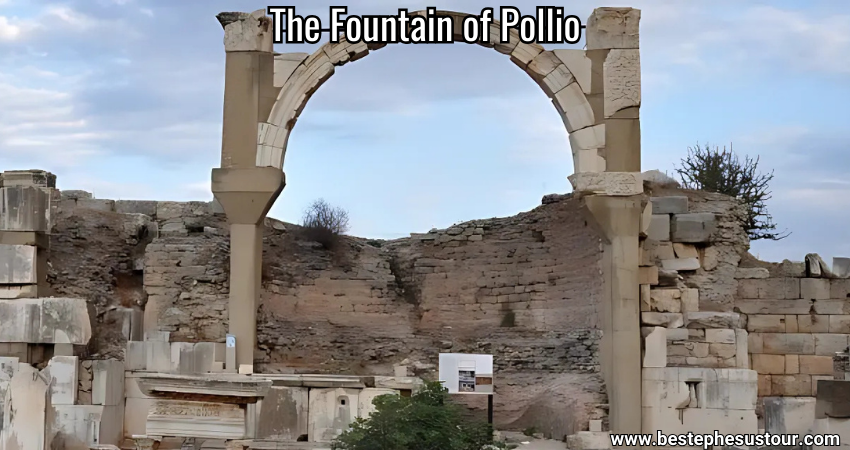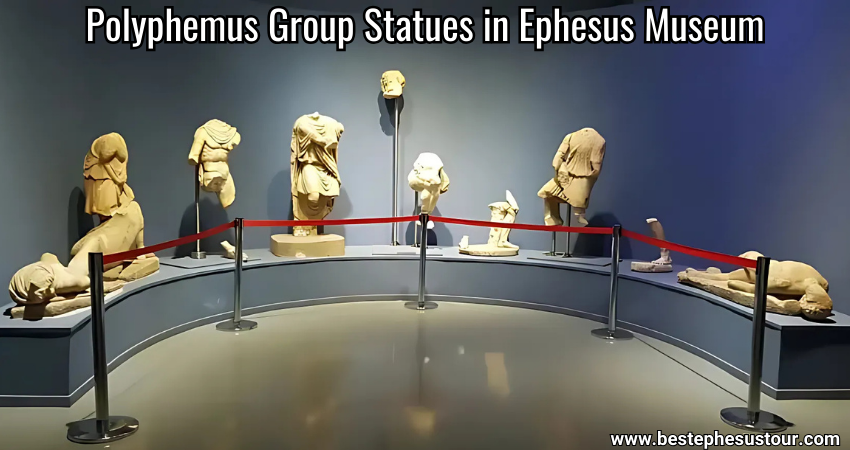The Fountain of Pollio is located on the side of the Domitian Square facing the State Agora of the Ancient City of Ephesus. This impressive structure is characterized by its wide and high arch, which once supported a triangular pediment. The water for the fountain was supplied from a semi-circular exedra near the State Agora, showcasing Ephesus’s well-planned water distribution system.
Table of Contents

Statues and Decorative Elements
One of the fountain’s most remarkable features was the Polyphemus statue group, now on display at the Ephesus Archaeological Museum in Selcuk. These statues originally adorned the pediment of the so-called Augustus (Isis) Temple at the center of the Agora but were later relocated to the fountain, likely due to structural damage or reconstruction efforts.
The Myth of Polyphemus
The statues depict scenes from the adventures of Polyphemus, the Cyclops and son of Poseidon, following the Trojan Wars. This mythological theme aligns with the artistic and cultural traditions of Ephesus, where many public structures were adorned with depictions of Greek mythology.

Construction and Patronage of the Fountain of Pollio
According to inscriptions, the fountain of Pollio was built in 97 A.D. by Sextilius Pollio, a well-known benefactor of Ephesus. The construction of such a monumental fountain reflects the wealth and civic pride of Ephesus during the Roman period.

Significance and Legacy of the Fountain of Pollio
The Fountain of Pollio was not just a source of water but also a statement of Roman engineering and artistic mastery. Its location near the Agora ensured its central role in daily life, while its decorative elements highlighted the city’s cultural connections to both Rome and Greek mythology. Today, its remains, along with the relocated Polyphemus statues, provide valuable insights into the architectural and artistic achievements of ancient Ephesus.





